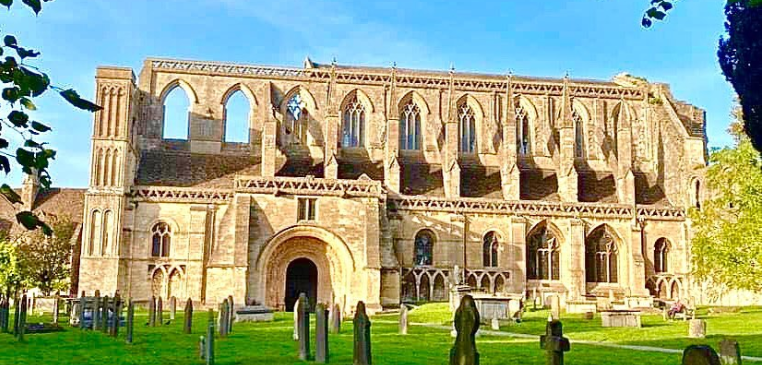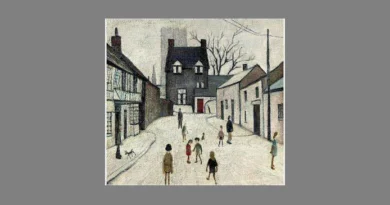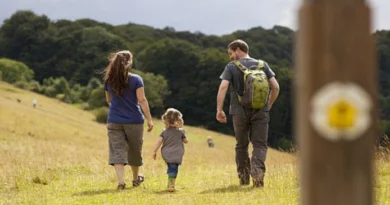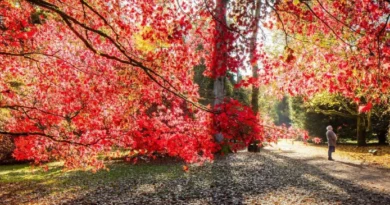Cotswolds Claims to Fame – Literary Connections
William Tyndale, whose translation of the Bible was the first to be printed in English, was thought to have been born around 1496 at the ancient farmhouse of Hunt’s Court in the village of North Nibley, near Dursley, south of the Cotswolds. Tyndale became a leading figure in Protestant reform, but after moving to Belgium, he was arrested and later convicted of heresy and treason in 1536 and burned at the stake.
Tyndale’s Bible soon became a model for subsequent English translations, and in 2002, he was ranked number 26 in the BBC’s poll of the 100 Greatest Britons.
A 111ft tall Cotswold stone tower was built on a hill at North Nibley in 1866 to commemorate Tyndale’s martyrdom. It is possible to enter and climb to the top of the tower up a spiral staircase of 121 steps. The monument can be seen for miles, even in places as far as Bristol, over 20 miles away. The Cotswold Way long-distance footpath passes the foot of the monument and then descends the hill into North Nibley.
It is claimed that William Shakespeare may have spent part or all of the eight years between 1582 and 1590, a period of his life of which little is known, in Dursley, possibly working as a school teacher.
The churchyard of St Lawrence Church, Lechlade-on-Thames, inspired the poet Percy Shelley to compose A Summer Evening Churchyard during a visit to the Cotswold town in 1815. The path through the churchyard is now named after him – “Shelley’s Walk”.
The 19th Century author Lewis Carroll (1832-1898), best known for writing Alice’s Adventures in Wonderland and the sequel Through the Looking-Glass and What Alice Found There, is said to have gained his inspiration for Alice from the daughter of a Cotswold clergyman. Carroll, whose real name was Charles Lutwidge Dodgson, was a friend of Reverend Edward Litton, who was Rector of Naunton, near Stow-on-the-Wold, from 1860 to 1897. Rev Litton lived in the magnificent rectory in Naunton and Carroll, his author friend from Oxford, who was also an Anglican cleric, is said to have frequently visited the rectory and gained inspiration for the character of Alice from Litton’s daughter.
J M Barrie (1860-1937), author of the much loved children’s book Peter Pan, written in 1904, had a significant Cotswold connection. Barrie’s wonderful fantasy of adventures about the little boy who never grew up was inspired during his stay at Stanway House in the Stanway village near Broadway. Between 1923 and 1932, Barrie spent his summers at Stanway House, which he rented from the Earl of Wemyss, whose daughter, Lady Cynthia Asquith, was a good friend of Barrie’s. A great cricket enthusiast, Barrie assembled his amateur cricket team, The Allahakbarries, comprised of his literary friends – including Rudyard Kipling, P G Wodehouse, A A Milne, H G Wells and Sir Arthur Conan Doyle. Barrie paid for a thatched pavilion built at Stanway’s cricket ground, which is still in use today.
Graham Greene (1904-1991), regarded as one of the greatest writers of the 20th Century, spent two years living in a cottage called Little Orchard in Hoo Lane, Chipping Campden, from 1931 to 1933 with his wife Vivien and their Pekinese dog, Pekoe. A renowned author, playwright and literary critic, Greene’s novels included Brighton Rock, and he also wrote the screenplay for the classic film noire The Third Man. During his time in Chipping Campden Greene wrote his first successful book, Stamboul Train – which was later turned into the 1934 film Orient Express. In 2012, a blue plaque was unveiled at the Campden cottage in which Greene lived.
The writer Evelyn Waugh (1903-1966), author of Brideshead Revisited, lived at Piers Court, a country house at Stinchcombe, near Dursley, between 1937 and 1956 following his marriage to his second wife Laura Herbert. Waugh was said to be at his most prolific while living in the village he nicknamed “Stinkers”.
The English novelist George Orwell (1903-1950) completed his classic Nineteen Eighty-Four while receiving treatment at the Cotswold Sanatorium for Consumption in Cranham in 1949. Despite being gravely ill, Orwell, whose real name was Eric Blair, used his typewriter to put the finishing touches to the novel and had it published in the USA while he was still a patient. He died in hospital in London in January 1950, aged 50. Three Cheltenham doctors founded The former Cranham sanatorium at the end of the 19th Century. Other patients included the poet, novelist and playwright James Elroy Flecker, the actor Owen Nares and the climatologist Kenneth Hare.
The writer Peter Currell Brown (born 1936) wrote the cult classic 1965 surrealist novel Smallcreep’s Day while working in Dursley, after moving his family to the neighbouring village of Cam with his family in 1963. He worked at various local jobs, including Dursley’s main factory, Lister’s, and the nearby Slimbridge Wildfowl Trust. In 1966 he set up The Snake Pottery and later gave up employed work to concentrate on the pottery.
Rev W V Awdry (1911-1997), creator of Thomas the Tank Engine, the central character in his acclaimed Railway Series of children’s books, spent the last three decades in the village of Rodborough, near Stroud. He retired from full-time ministry in 1965 but continued writing until 1972. He is fondly remembered in the area and was seen daily riding his bicycle up the steep Rodborough Hill. Rev Awdry was awarded an OBE in the 1996 New Year’s Honours List, but by that time his health had deteriorated and he could not travel to London. He died peacefully on March 21, 1997, at the age of 85 and his ashes are interred at Gloucester Crematorium.
The author Laurie Lee (1914-1997) is one of the Cotswolds’ most famous sons. The poet, novelist and screenwriter was born in Stroud but moved with his family to the nearby village of Slad in 1917, where was brought up. He attended the Central Boys’ School in Stroud. Lee’s most famous work is Cider with Rosie (1959), the first autobiographical trilogy recounting his childhood in the Slad Valley. He died in Slad in 1997 at 82 and is buried in the churchyard of the village church, Holy Trinity, which has become a place of pilgrimage for many admirers of his writings.
Frank Keating (1937-2013), described as “a giant of sports journalism”, joined the Stroud News as a local newspaper reporter in 1956.
Born to a farming family in Herefordshire, Keating was raised in Gloucestershire and as a sports journalist and author, he was most noted for his regular columns for The Guardian newspaper. He died at a hospice in Hereford, aged 75, on in January 2013, after suffering from pneumonia.
The poet and television celebrity Pam Ayres, who lives near Cirencester, wrote one of her most popular poems, The Embarrassing Experience with a Parrot, about a trip to the Cotswold Wildlife Park. In June 2004 she was awarded the MBE for services to literature and entertainment.
Celebrated author JK Rowling, born in Yate, to the south-west of the Cotswolds, named the Dursley family in her famous Harry Potter books, after the nearby town of Dursley, which she has never visited.
Alan Rusbridger, who has been the editor of The Guardian national newspaper since 1995, has a home in the Cotswold village of Blockley. Rusbridger (born 1953) has had a colourful career in journalism, including his paper’s involvement in recent years with the controversial news-leaking organisation WikiLeaks. In the 2013 film The Fifth Estate, about WikiLeaks and Julian Assange, thought to be its founder, Rusbridger was portrayed by Peter Capaldi, who in August 2014 became the new Doctor Who.




